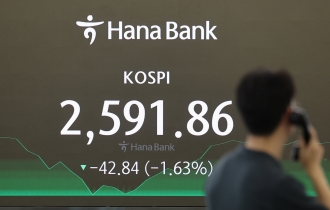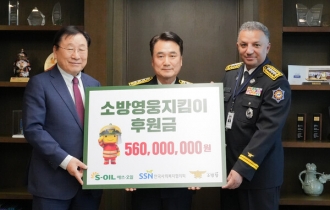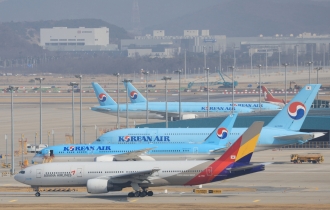NK defies international pressure with missile launch
[THE INVESTOR] North Korea fired at least one short-range ballistic missile into the East Sea on May 29, said South Korea’s military, in an apparent effort to demonstrate its ballistic missile capability and use it as leverage for potential negotiation over the regime’s nuclear program.
The suspected Scud-type missile lifted off at 5:39 a.m. from the North’s coastal city of Wonsan and flew at least 450 kilometers, according to Seoul’s Joint Chiefs of Staff. The Japanese government said the missile landed in the country’s exclusive economic zone, but there was no report of damage in the area.
The launch was the third missile test that the North has conducted since President Moon Jae-in took office. It is Pyongyang’s latest effort to advance its missile capability designed to develop a nuclear-tipped intercontinental missile and disrupt South Korea’s anti-missile system, military officials and analysts said.
The test was also intended to put pressure on President Moon Jae-in to shift from the previous government’s hawkish stance on the North, the officials added, as the international community ratcheted up condemnation on Pyongyang’s missile and nuclear threat.
“Our analysis of (North Korea’s) intention is to demonstrate its commitment to building nuclear and missile capability based on its own roadmap and put pressure on our government to shift its policy toward North Korea,’ said JCS spokesperson Col. Roh Jae-cheon.
Although there was no immediate comment from North Korea and the allies have yet to figure out the exact type of missile used, there was speculation that the missile might be the Scud-C type with a range of 500 kilometers capable of reaching almost all parts of the peninsula.
Given that there were no Scud-type missiles being deployed at the Wonsan launch site, some analysts suggested that the launched missile could be a revised version of a Scud-type missile targeting US aircraft carriers deployed near the peninsula.
In a statement released after the launch, the US Pacific Command said that it had detected and tracked a short-range missile for six minutes until it landed in the East Sea, adding that the missile did not pose a threat to the US mainland.
Since the beginning of this year, North Korea has boasted advanced missile capability by firing a total of nine missiles with diverse capabilities in engine and range. Among them were the medium-range, solid-fueled Pukguksong-2 fired May 21 and the intermediate-range, liquid-fueled Hwasong-12 fired a week earlier.
Cheong Wa Dae convened a National Security Council meeting earlier in the day to discuss the North’s launch. The meeting was hosted by presidential security chief Chong Eui-yong and attended by newly appointed deputy NCS chiefs and the ministers of defense and foreign affairs.
In a statement, the JCS warned North Korea’s repeated provocation would further deepen its international isolation. The Foreign Ministry issued a separate statement, denouncing the test as defiance of the international community’s commitment to denuclearization of the peninsula.
The Ministry of the Unification also called for a stern response to the North’s provocation, but made clear that the ministry will continue its efforts to engage with Pyeongyang, including a policy review of whether to renew civil exchange between the two Koreas
“As far as the North’s missile tests, the foreign and defense ministries have delivered their condemnation,” ministry spokesperson Lee Duck-haeng said in a press briefing, noting that the condition for inter-Korean talks will also be considered an “equally important” issue.
To address the North’s advanced missile capability, the Pentagon, meanwhile, will conduct a missile defense drill designed to shoot down an ICBM heading for the US mainland. The drill is expected to take place as early as May 30.
Considered to be the first of its kind, the goal of the exercise is to more closely simulate a North Korean ICBM aimed at the US homeland, according to AP, citing US officials.
By Yeo Jun-suk/The Korea Herald (jasonyeo@heraldcorp.com)
EDITOR'S PICKS
- Seoul shares rattled by Israeli attack on Iran; Kospi dips to nearly 11-week low
- S-Oil donates W560m to support firefighters
- LG CNS teams up with Yonsei University to nurture AI specialists
- Polestar 4 to make Korean debut in June
- S. Korea pledges W23tr venture capital fund for green investment at G20 meeting
- Sungsimdang outperforms bakery giants to log sales over W100b
- France rejects opening Paris flight routes to T'way Air, deals blow to Korean Air merger
- SK hynix chief underscores chip cooperation between Korea, US















